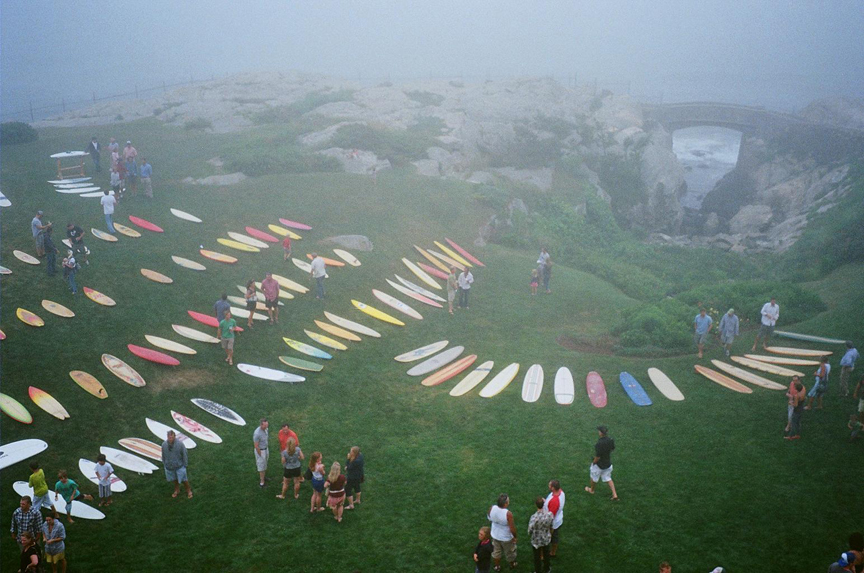A son of Mā’ilikūkahi (who ruled about the time Columbus crossed the Atlantic) was Kalona-nui, who in turn had a son called Kalamakua. Kalamakua is said to have been responsible for developing large taro fields in what was once a vast area of wet-taro cultivation on Oʻahu: the Waikiki-Kapahulu-Mōʻiliʻili-Mānoa area.
The early Hawaiian settlers gradually transformed the marsh above Waikīkī Beach into hundreds of taro fields, fish ponds and gardens. For centuries, springs, taro lo‘i, rice paddies, fruit and vegetable patches, duck ponds and fishing areas were a valuable means of subsistence for native Hawaiians and others.
Formerly the home of Hawaiian royalty, including King Kamehameha, Waikīkī, meaning “spouting waters,” once covered a much broader area than it does today.
The ahupuaʻa, or ancient land division, of Waikīkī actually covered the area extending from Kou (the old name for Honolulu) to Maunalua (now referred to as Hawai’i Kai).
Waikīkī’s marshland, the boundaries of which changed seasonally, once covered about 2,000-acres (about four times the size of Waikīkī today) before the marshes were drained.
During the first decade of the 20th-century, the US War Department acquired more than 70-acres in the Kālia portion of Waikīkī for the establishment of a military reservation called Fort DeRussy.
They drained and filled the area, so they could build on it. Thus, the Army began the transformation of Waikīkī from wetlands to solid ground.
In the early-1900s, Lucius Pinkham, then President of the Territorial Board of Health and later Governor, developed the idea of constructing a drainage canal to drain the wetlands, which he considered “unsanitary.” This called for the construction of a canal to reclaim the marshland.
The Waikīkī Reclamation District was identified as the approximate 800-acres from King and McCully Streets to Kapahulu Street, near Campbell Avenue down to Kapiʻolani Park and Kalākaua Avenue on the makai side (1921-1928.)
The dredge material not only filled in the makai Waikīkī wetlands, it was also used to fill in the McKinley High School site.
During the 1920s, the Waikīkī landscape would be transformed when the construction of the Ala Wai Drainage Canal, begun in 1921 and completed in 1928, resulted in the draining and filling in of the remaining ponds and irrigated fields of Waikīkī.
The initial planning called for the extension of the Ala Wai Canal past its present terminus and excavate along Makee Island in Kapiʻolani Park, connecting the Canal with the ocean on the Lēʻahi side of the project.
However, funds ran short and this extension was contemplated “at some later date, when funds are made available”; however, that never occurred.
By 1924, the dredging of the Ala Wai Canal and filling of the wetlands stopped the flows of the Pi‘inaio, ‘Āpuakēhau and Kuekaunahi streams running from the Makiki, Mānoa, and Pālolo valleys to and through Waikīkī.
Walter F. Dillingham’s Hawaiian Dredging Company dredged the canal and sold the material he had dredged to create the canal to build up the newly created land. The canal is still routinely dredged.
During the course of the Ala Wai Canal’s initial construction, the banana patches and ponds between the canal and the mauka side of Kalākaua Avenue were filled and the present grid of streets was laid out. These newly created land tracts spurred a rush to development.
With construction of the Ala Wai Canal, 625-acres of wetland were drained and filled and runoff was diverted away from Waikīkī beach. The completion of the Ala Wai Canal not only gave impetus to the development of Waikīkī as Hawai‘i’s primary visitor destination, but also expanded the district’s potential for residential use.
During the period 1913-1927, the demand for housing in Honolulu grew along with the city’s population. Waikīkī helped satisfy this demand; the large kamaʻāina landholdings virtually disappeared and the area started to be subdivided.
Before reclamation, assessed values for property were at about $500-per acre and the same property was reclaimed at ten cents per square foot, making a total cost of $4,350-per acre. The selling price after reclamation, $6,500 to $7,000-per acre, showed the financial benefit of the reclamation efforts.
From an economic point of view, without the Ala Wai Canal, Waikīkī may never have developed into the worldwide tourist attraction it is today.
In 1925, the City Planning Commission requested the citizens of Honolulu to submit suitable Hawaiian names for the renaming of the Waikīkī Drainage canal; twelve names were suggested.
The Commission felt that Ala Wai (waterway,) the name suggested by Jennie Wilson was the “most euphonic”. (An engineer with the Planning Commission was quick to note that, “the fact that Mrs. Wilson is the mayor’s wife had nothing to do with the choice of the name.”)
In November 1965, a storm, classified as a 25-year event, overflowed the Ala Wai Canal banks and flooded Ala Wai Boulevard.
Ala Wai Canal and the historic walls lining the canal are owned by the State of Hawaiʻi. The promenades on the mauka side of the Ala Wai Canal are owned by the State, and by, Executive Ordered to the City and County of Honolulu, the promenades on the makai side are owned by the City.
The promenades on both sides of the Ala Wai Canal are maintained by the City Department of Parks and Recreation. The Ala Wai Canal is listed in the National and State registers of historic places.


























